Hapkido Taekwondo History
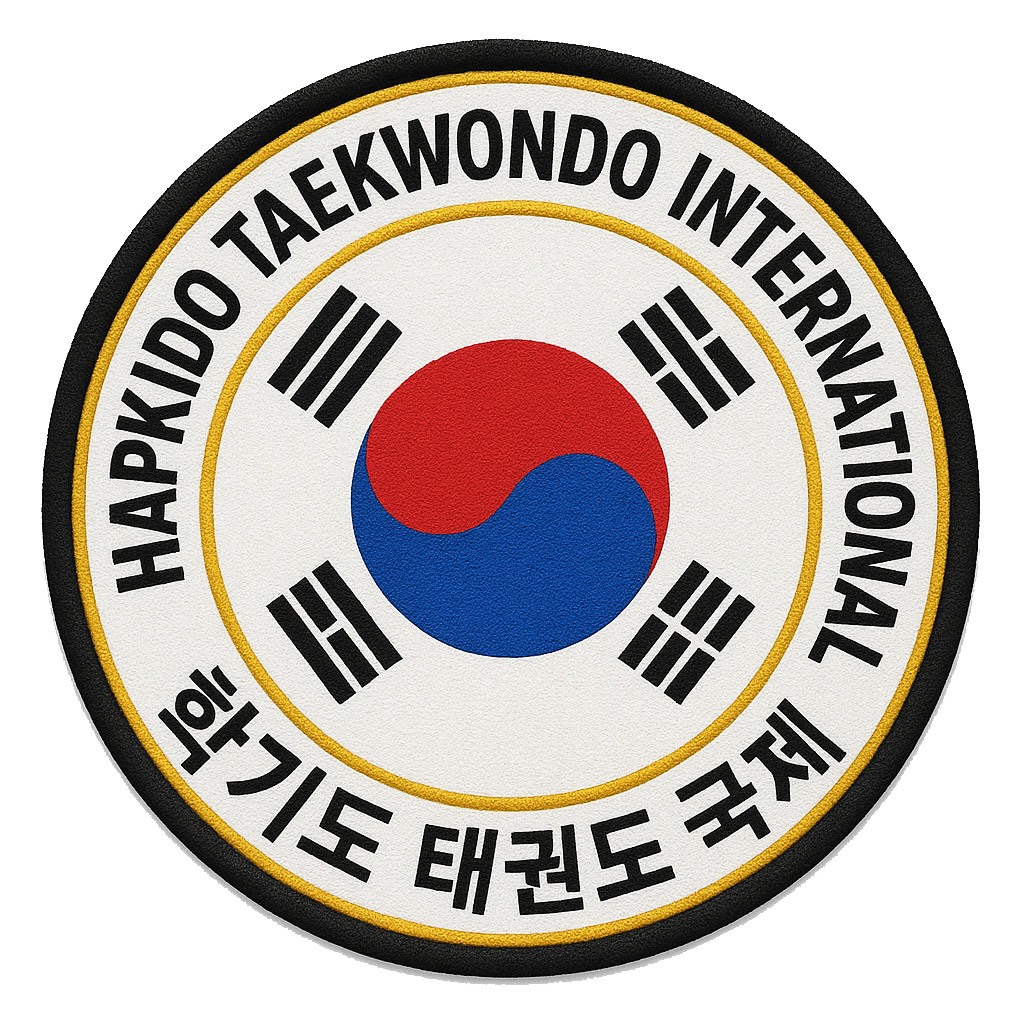

The History of the Korean Martial Arts
Hapkido Taekwondo History
By Scott Shaw
Ancient Korea and the Foundations for the Korean Martial Arts
Korea is a predominantly mountainous peninsula, three hundred twenty kilometers (two hundred miles) wide by nine hundred sixty-five kilometers (six hundred miles) in length. It extends Southward from the Chinese mainland. The East Sea, also known as the Sea of Japan, borders Korea to the East and the Yellow Sea frames it to the West. Only twenty percent of the Korean Peninsula is lowland suitable for cultivation and mass settlement. The remaining eighty percent is too rugged for agriculture. Due to these geographic factors, the majority of the Korean population is concentrated along inland valleys and coastal plains which open up to its Western Coast.
Koreans are an ethnically homogeneous Mongoloid people. The Korean Peninsula was first inhabited by Tungusic tribes from central Asia in about 3000 B.C.E. These people had a Paleolithic culture, using stones as tools and followed a shamanistic religion. The legendary figure Tan'gun is said to have formed the first Korean Kingdom in 2333 B.C.E.
The Tungusic tribes spoke a Ural-Altaic language. This language group extends from Scandinavia and the Balkans in the West, through Central, North, and Northwest Asia in the East. Though dialects of the Ural-Altaic languages vary greatly, they each share similar characteristics of syntax (the way in which words are put together). This language group set the foundation for the modern Korean language.
Korea is bounded to the North by China. The Chinese language comes from the Sino-Tibetan language group. This fact, thereby, details that Chinese culture had little influence on the early Korean peoples at the time of their initial inhabitation of the Korean Peninsula.
China introduced bronze into Korea in 108 B.C.E. This introduction, combined with the fact Chinese military colonies with a greater understanding of agricultural sciences were pushing their way onto the Korean Peninsula, led to a rapid progression of both weaponry and farming for the peoples of the Korean Peninsula. Due to these advancements in civilization, in association with growing individual tribal unities, three loosely formed Korean tribal states formed. Paekche formed in 18 B.C.E., Koguryo in 37 B.C.E, and Silla in 57 B.C.E. This was the beginning of what became known as the, "Three Kingdom Period" of Korean history.
As time progressed, these kingdoms continued to draw ideological and political boundaries until they became three very distinct entities. In fact, The Three Kingdoms evolved linguistically into three separate dialects of the then forming Korean language.
Koguryo was by far the largest kingdom. It encompassed the predominance of the Korean Peninsula — extending from the Chinese border southward. Paekche and Silla were both smaller kingdoms located at the Southern tip of the Korean Peninsula.
During this period, tribal deity worship declined on the Korean Peninsula due to the penetration southward from China of Confucianism, Taoism, and later Buddhism. All of these religions had varying degrees of importance in the development of thought during the Three Kingdom Period.
Confucianism
Confucianism was the first to arrive and began to be absorbed by the Kingdoms of Koguryo and Paekche in the fourth century C.E. These states did not become wholly Confucian societies, however. They maintained their own cultural identities while adopting certain elements of the Confucian system of education and politics. From this introduction, the standards of formalized Korean culture and statesmanship were raised considerably, however. Additionally, the Confucian system of recording events in written form began to take place. Therefore, this is the first period of Korean history which came to be formally recorded.
Under the guidance of the Confucian monk Sundo, King Sosurim of Koguryo, in 372 C.E, established T'aehak — the first national college for the education of the aristocracy in his kingdom. Soon after this he began opening private academies called Kyongdang. These schools were set up for the purpose of educating the youth of the Koguryo aristocracy in the Confucian classics, Chinese literature, the healing arts, and the martial arts. Thereby, these were the first formalized schools of martial arts which came into existence on the Korean Peninsula. These academies were not open to the public but were solely for the privileged.
From the Kingdom of Paekche, Confucian ideals were transmitted to Japan at the bequest of King Kunch Ogo (346-375 C.E.). Two Confucian scholars, A Chikki and Wang In were sent to Japan. They brought with them ten copies of the Analects of Confucius and one copy of the Chien Cha Wen, "The Thousand Character Classic." This is also the point where the initial transmissions of the Korean martial arts system of Su Bak was passed from Korea to Japan.
During the Three Kingdom Period, Confucian ideology seems to have had the least direct effect upon the Korean Kingdom of Silla. By the end of the 6th century C.E. Confucian ideals did, however, apparently influence some of the cultural doctrines of this kingdom. Therefore, its presence was in existence but not to the degree that it had impacted the kingdoms of Koguryo and Paekche.
Taoism
Taoism, which is both a religious and political system of thought, was first guided onto the Korean Peninsula in 624 C.E. when Emperor Kao Tsu, of the Chinese T'ang Dynasty, sent a Taoist priest, Shu Ta, to meet with King Yong Nyu (617- 642 C.E.) of Koguryo. At this juncture, the elite members of Koguryo society begin to take an interest in the speculative thought of Taoism. This enthusiasm only lasted for approximate one hundred years, however. It was not until much later, in the 12th century, that the Taoist concept of Um and Yang (Yin and Yang in Chinese) and the I Ching scriptures were embraced by the Korean masses.
Buddhism
Buddhism came to China from India in the first century C.E. Though not fundamentally embraced by each of the varying Chinese dynasties, it did expand and reached the Northern Korean kingdom of Koguryo in 372 C.E. The teachings then proceeded Southward to Paekche in 384 C.E.
Buddhism was introduced to Silla during the reign of King Nul Chi (417-457 C.E.). Two Buddhist missionaries, Chong Bang and Myolgubi arrived during the early part of his reign and were put to death. The monks, Hukhoja and Ado arrived from Koguryo later in his rule. Near the time of their arrival, King Nul Chi's daughter became ill. Hukhoja cured the princess by burning incense in her presence and making a vow to one of the Bodhisattvas. This cure brought the King's favor and Buddhism was accepted by the Silla aristocracy.
As time progressed on the Korean Peninsula, Buddhism vacillated between favor and outrage within the varying Korean dynasties. By the sixth century, Koguryo, though predominately adhering to a Confucian doctrine, accepted elements of Buddhism into its overall philosophic canon. Po Duk, one of the preeminent Koguryo Buddhist monks of this period, traveled to China where he amassed a large amount of Buddhist scriptures. Upon returning to his kingdom, he attempted to veer the Koguryo government away from any adherence to Confucianism. Unsuccessful, he left for the Kingdom of Paekche, where Buddhism flourished. In Paekche, Buddhism was so universally accepted that in 600 C.E. King Pop instigated a law which forbid the taking of any life, including animals.
From Paekche, Buddhist monks were sent to Japan in the sixth century. This is the point where Buddhism was introduced to the island nation.
The Buddhist monk, Kwalluk, (Kanroku in Japanese), crossed the East Sea in 602 C.E. He brought with him a large number of Buddhist sutras, historical books, works on astronomy, geography, and the occult arts, including the science of Ki. He was instrumental in the founding the Sanron school of Buddhism in Japan.
By the end of the sixth century, Buddhism reached its maturity in all three Kingdoms on the Korean Peninsula. Korean monks were commonly sent to China and India, and missionaries frequently traveling to Japan. Buddhism completely replaced the primal shamanistic religions indigenous to the Korean Peninsula.
Though The Three Kingdoms had become essentially Buddhist in their religious beliefs, there existed ever increasing differences in their political ideologies. Warfare between the kingdoms, though always present, moved onto new expansionist ideologies.
Koguryo, due to its size and military strength was the first to launch continued aggressive assaults against its smaller neighbors: Paekche and Silla. During this period, Paekche and Silla, in addition to battling Koguryo, also fought each other.
Silla, the kingdom in the Southeast corner of the Peninsula, turned to China, which was under the control of the T'ang Dynasty for help. The Silla envoy to the T'ang court was Kim, Chunch Ue. He formulated a military alliance with the T'ang to fight against the forces of Koguryo and Paekche. The agreement detailed that if the combined Silla and T'ang armies defeat Koguryo, the land south of P'yongyang would belong to Silla, while the land to the North would go to China. If they were to also defeat Paekche, the entire country would become Silla's.
In 660 C.E., the combined Chinese and Silla forces won over the armies of Paekche. After the war had been won, however, the T'ang government ignored its agreement and set up five military bases in Paekche. It also set up pro-Chinese enclaves inside Silla. Though this angered the Silla government, as long as Koguryo existed to the North, Silla could not expend its military energy attempting to defeat the T'ang.
The Hwa Rang
During this extensive period of war, in the sixth century C.E., the first highly formalized group of martial art practitioners came to be organized on the Korean Peninsula. They were known as the Hwa Rang. This aristocratic warrior group, born in Silla, is what is attributed to unifying of the Three Kingdoms of Korea.
The Hwa Rang (Flowering Youth) warriors were first envisioned by King Chin Hung of Silla in 576 C.E. Though his kingdom had its army, he believed his soldiers were not of an exceptional nature — which is why his country could not defeat Koguryo, Paekche, and the invasive T'ang. Therefore, he set about to organize a group of young talented noblemen who were exceedingly loyal to the thrown and could be extensively trained in all forms of warfare and then successfully go into battle against Koguryo, Paekche, and the Chinese T'ang dynasty. The problem was, however, how to secure and evaluate aristocratic men of this caliber.
It was believed that if young men could be gathered into groups and taught the higher levels of Buddhism, honor, and the arts, the exceptionally talented ones among them would over shadow the rest. To this end, two beautiful court women were selected to gather men around them. The names of these two girls were Nam Mo and Chun Jung. Several hundred men did, in fact, congregate in their presence.
Kim, Tae Mun in the Hwa Rang Segi, "Annals of the Hwa Rang" states, "Ministers and loyal subjects shall be chosen from this group and good generals and brave soldiers will be born."
Chun Jung became jealous of Nam Mo, however. She poisoned her wine and threw her in the river, killing her. Chun Jung was subsequently put to death by the Royal Court and the group of men surrounding them disbanded.
King Chin Hung's next method was to choose handsome male youths of Nobel birth. The age of these boys was as young as twelve years old. These men were then dressed in the finest clothing and their faces were attractively painted with elaborate make-up. They were extensively instructed in Buddhism, poetry, and song. It was believed, those who fared well in these activities had the grace to become competent warriors. Thus, a certain amount of them were recommended to the Court of Hwa Rang.
These chosen men, now referred to as Hwa Rang, were trained in all forms of martial combat, as well as continuing their studies in Buddhism, Ki science, and the arts. The martial art instruction program of the Hwa Rang warriors included, developing their bodies by climbing rugged mountain and swimming in turbulent rivers during the coldest months of the year. They trained in all forms of known hand-to-hand combat. The primary system of which was named Su Bak. The Hwa Rang were additionally taught to use weapons unyieldingly. They were trained with the sword, the staff, the hook, the spear, and the bow and arrow.
Su Bak Gi
The Hwa Rang are believed to have invented the martial art system of foot fighting named, Su Bak Gi. It is believed this new dimension to combat was added by the Hwa Rang due to the extensive mountain running endurance training they practiced. As their leg muscles were developed to exceptional levels, they began to incorporate formalized kicking techniques into their overall system of hand-to-hand combat. Therefore, Su Bak Gi is believed to be the source point for the advanced kicking arsenal the Korean martial arts possess.
Won Hwa the Original Flower
Interestingly enough, at the head of the Hwa Rang hierarchy were women. Not a single woman, as some historians have falsely claimed, but, several women. These female leaders were known as, Won Hwa or "Original Flower."
The Hwa Rang were guided by a code of ethics laid down by the eminent Buddhist monk, Wong Wang.
Code of the Hwa Rang:
1. Serve the king with loyalty.
2. Be obedient to your parents.
3. Be honorable to a friend.
4. Never retreat in Battle.
5. Kill justly.
A Hwa Rang troupe was generally composed of several hundred men. The group was led by a Hwa Rang warrior of noble birth and several Buddhist monks. The Hwa Rang leaders, after completing their training, would go out into the countryside and organize men at the village and clan level. They would then instruct them in Buddhist philosophy and teach them the martial arts. From here, these men would be lead into battle — willing to lay down their life for the kingdom of Silla. From these battles came the unification of Korea.
After the unification of Korea, and the defeating of the T'ang Dynasty, the mind of the Korean peoples rapidly began to shift from confrontations to more philosophic thoughts. The Hwa Rang fell into decline by the end of the seventh century, until they became virtually nonexistent. They became known more as a group specializing in healing, Buddhist philosophy, and poetry than a warrior troupe.
Su Bak
Su Bak is the first documented martial art system to have existed on the Korean Peninsula. Dating its origination relies predominantly upon legend, however. Korean historians often place its inception during the legendary rule of King Tan'gun, (2333 B.C.E.). There is, however, no historical data to prove this time frame. There are historic records of Su Bak's existence in the fourth century C.E., however. Paintings in the Kak Je Tomb, geographically located in ancient Koguryo, depict two Su Bak practitioners sparring. It is difficult to decipher what actual fighting techniques Su Bak employed, however, as the tomb paintings are vague.
During the late Three Kingdom Period, Su Bak became fragmented and differing schools of martial arts came into existence.
Yu Sul
During this period of fragmentation, a new system of Korean martial arts was formed. It was named, Yu Sul. Yu Sul was a softer grappling art, which is historians believed to be the influence which began the Japanese system of Jujitsu.
With the birth of Yu Sul there became two very different schools of martial thought on the Korean Peninsula. They were the hard, straight forward attacking methods of Su Bak — which possesses predominantly striking techniques and the softer, manipulative defenses of Yu Sul.
Tae Kyon
During this time frame Su Bak became known as Tae Kyon. Tae Kyon was written in the Chinese characters for, "Push Shoulder." The Hwa Rang warriors obviously embraced this martial art form and, as mentioned, created their own addition to it, known as Su Bak Gi or foot fighting.
Tae Kyon was born at a time when martial arts, on the now unified Korean Peninsula, went into a rapid decline. As peace came to the Korean Peninsula, there became little use for the practice of martial arts among the average individual.
The martial art system of Yu Sul declined and vanished from the Korean Peninsula almost as fast as it had developed. By the end of the 7th century there existed no sign of it. Tae Kyon, therefore, survived as the only fighting system with a link to the ancient Hwa Rang.
Upon the unification of the three kingdom, The Silla Dynasty (688-935 C.E.) came into control. This was a highly centralized Buddhist state, where arts and not warfare flourished.
The Silla Dynasty fell in 935 C.E. The Kingdom was overthrown by a rebel government, which became the Koryo Dynasty (935-1392). Though internal warfare took place in Korea, during this change in power, the average citizen was not touched by it and the countries philosophic outlook continued to grow.
In 1170, a military coup seized control of the country and by the end of the 12th century, Cho a military family, ruled Korea and suppressed the Buddhism ideals held by its civilians.
The Mongols from China began to invade the Northern outreaches of the Korean Peninsula in 1231. The Cho leadership sent the majority of its armies to fight these Northern battles. They were soon defeated by the sheer numbers of Mongolian troops. In 1258 the Cho regime was deposed and the Koryo government return to control under the guidance of the Mongols.
Though this period saw internal strife in Korea, the thoughts of the people were on philosophy and the arts, not on politics. The average citizen felt hand-to-hand combat was barbaric. Martial art practitioners were looked down upon in all regions of Korea. In fact, King Chung Mok (1344-1348) outlawed the practice of Tae Kyon by civilians, altogether.
A revolt against Mongolian rule erupted in 1356, which brought another period of disorder to the Korean Peninsula. After years of internal guerrilla warfare, the Koryo Dynasty was over thrown and the Yi Dynasty (1392-1909), who swore allegiance to the Ming Dynasty of China.
The Yi Dynasty rejected Buddhism and embraced Confucianism as the national religion. A well functioning Confucian bureaucracy came into existence, which brought about an orderly social structure and rapid educational development to Korea.
From the Yi Dynasty came the written Hangul language, composed by King Sejong (1418-1450). This is considered one of the greatest events of Korean history — as the Hangul language was the first indigenous Asian language to be independently developed and written with its own phonetic script.
Throughout the Yi Dynasty, cultural interactions between China, Japan, and Korea increased. Martial art ideologies also came to be exchanged on a limited level. Various schools of Kung Fu from China and Karate from Japan existed in a tenuous manner in Korea during this dynasty. Tae Kyon, though obviously receiving some influences from these systems, maintained itself as a highly aggressive system of self defense — predominantly utilizing assertive punching and kicking techniques. Though not practiced by the average civilian, Tae Kyon was the standard of the hand-to-hand combat for the Korean military. Through this arena, it was passed down from ancient to modern times.
As Korea entered the twentieth century, they were plagued by expansionist activity at the hands of Japanese. The Yi Dynasty, which was considered Korea's, "Age of Enlightenment," came to an end in 1909 when Japan occupied the country. Thus, the transmission and advancement of Tae Kyon ended.
Rediscovering the Ancient Korean Martial Arts
In 1935 Japanese archaeologist exploring the Tung-hua province of Manchuria, north of what is now modern day North Korea, uncovered two tombs. It was eventually established that these tombs belonged to the Tenth Kingdom of Koguryo, who had its capital in this vacinity. The tombs were constructed in the fourth century C.E.
Within these tombs were discovered murals paintings. On the ceiling of the Muyong Chong tomb is a painting depicting two male figures facing each other in what can best be described as a fighting posture. The mural painting of Kakchu Chong tomb show two men wrestling.
Also discovered was the Sok Kul An cave. At its entrance is a carved statue of the famous Korean warrior, Kum Gang Yuk Sa, from the reign of Korean King Hye Gong (742-762 C.E.). He guards the cave in a tradtional martial art pose.
Though these three depictions give credence to the fact that there is a historic tradition of martial arts on the Korean Peninsula, they do little to establish what exact techniques these practitioners used.
Moo Yeh Do Bok Tong Gi
It is essential to understand before you begin to study the foundations of the modern Korean martial arts that virtually all records of the actual techniques of the ancient Korean martial arts were destroyed by the Japanese forces which occupied the Korean Peninsula from 1909 forward. Many modern Masters of the Korean martial arts falsely claim they can trace the origins of their systems back to the dawn of Korean civilization. Unfortunately, this is historically not the case. There are only two remaining documents: the Moo Yeh Jee Bo and the Moo Yeh Do Bok Tong Gi, (sometimes written in English as, Muye Dobo Tongji), which give us insight into Korea's martial history.
The conflicts between Japan and Korea are not unique to the twentieth century. They have been ongoing for centuries. Between 1592 and 1598 an attempted Japanese invasion of Korea took place. The Japanese invaders were eventual defeated. Near the end of this conflict, a Chinese military text entitled, Ki Hyu Shin Zu, authored by the Chinese military strategist and martial artist, Chuk, Kye Kwang was discovered. The text had been acquired from a slain Japanese General. This manuscript was then presented to Korean King Sun Jo (1567 - 1608). Within its pages was detailed a system of Chinese weapons and hand-to-hand combat, designed specifically for warfare. King Sun Jo was so impressed by the methods presented in this text that he invited Chinese Generals and Chinese Martial Art Masters who employed this system to visit his capital — which they did. From this contact, he ordered one of his Generals, Han Kyo, to take what he had learned from both the text and the demonstrations and design a new system of battlefield combat. This system, written in six chapters, was created and published as, Moo Yeh Jee Bo or The Illustrations of the Martial Arts. This text became the basis for formalized warfare among the Korean military. Within the pages of the text, the techniques of the Sang Soo Do (long sword), Jang Chang (spear), Dang Pa (triple end spear), Kon Bong (long staff), and Dung Pa (shield defense) are outlined.
Korean King Yong Jo (1724 - 1776) had the text revised during his reign. Twelve additional approaches to fighting were added. The manual was renamed, Moo Yeh Shin Bo or The New Illustrations of the Martial Arts. The fighting techniques added to the pages employed the Bon Kuk Kum (Korean style straight sword), Wae Kum (Japanese style sword), Jee Dook Kum (Admiral's sword), Yee Do (short sword), Sang Kum (twin swords), Wae Kum (crescent sword) Juk Jang (long bamboo spear), Hyup do (spear with blade), Kee Jang (flag spear), Pyun Kon (long staff with end like a nunchaka), Kyo Jun (combat engagement strategy), and Kwon Bop (hand-to-hand combat).
At the direction of the next King of Korea, King Jung Jo (1776 - 1800), in 1790 the Korean military strategists, Yi, Duk Moo and Park, Je Ga again revised the text and added six additional chapters to the manuscript: Ma Sang (combat horsemanship), Ki Chang (spear fighting from horseback), Ma Sang Wol Do (sword fighting from horseback), Ma Sang Sang Kum (twin sword fighting from horseback), Ma Sang Pyun Kon (long staff with shorter end like nunchaka, fighting from horseback), Kyuk Koo (gaming on horseback). The text was retitled, Moo Yeh Do Bok Tong Gi, The Comprehensive Illustrated Manual of the Martial Arts. This text is the primary remaining document which modern Korean martial art masters turn to search out their foundational history.
The Moo Yeh Do Bok Tong Gi was first published for world consumption, in its original form, over twenty years ago by Tang Soo Do Moo Duk Kwan founder Hwang Kee in this book, Tang Soo Do. It has recently been translated into English with the title written as, Muye Dobo Tongji.
Many people hear of this book believe that it will hold all of the answers to all of their questions on combat. Unfortunately, this is not the case. The techniques presented in this manuscript are extremely limited and the drawings, which depict the maneuvers, are not exacting as they were created several hundred years ago.
As a source point for understanding the evolution of Korean history, Moo Yeh Do Bok Tong Gi, is a great text. It was written for a different age, however. As such, it is not the holy grail of martial art manuscripts as some people believe it to be. What you take away from it will be based on your own understanding of the martial arts.
The Korean Dynasties:
The Koguryo Dynasty 37 B.C.E. - C.E. 668
The Silla Dynasty 668-935
The Koryo Dynasty 935-1392
Yi Dynasty 1392-1909
Japanese Occupation of Korea 1909 - 1945
Korean Independence 1945 -
Korean independence came in 1945, at the end of World War II, when the United States and Allied forces drove the Japanese government from its control over the Korean Peninsula. With this, came a fervor on the part of the Korean citizens to never allow another government to control their country again.
Along with a massive Korean military development and armament came the advent of several new Korean martial arts systems. These styles were developed as a method to not only protect the average citizen, but to aid in the overall protection of Korea, as well.
The creators of these systems incorporated the martial arts styles they had each individually studied abroad or while in the employ of the Japanese military with the recorded techniques of Tae Kyon. Among these new Korean martial systems were Hap Ki Do founded by Choi, Yong Shul, Tang Soo Do Moo Duk Kwan, founded by Kee, Hwang, and Tae Kwon Do which was predominately formulated by General Choi, Hong Hi.
These three systems are the predominate Korean martial art styles in existence today. The offensive and defensive technique of Tang Soo Do and Tae Kwon Do are very similar, relying greatly upon the stances, punching, and kicking techniques of Japanese Karate, integrated with historic Tae Kyon. Hap Ki Do, on the other hand, though embracing the elaborate punching and kicking techniques of Tae Kyon, accomplishes its defensive method from a much different focus.
The Factors That Created Hapkido
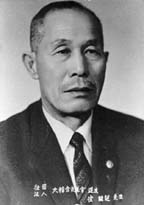
Choi, Yong Sool (alternative spelling Yong Shul Choi), the founder of Hapkido, was born in the town of Yong Dong, Choong Chung Province, relatively near Taegue, South Korea in 1904. In 1909 Korea came under Japanese occupation. It is believed that Japanese troops took Choi from his homeland at the age of seven to be assigned work in Japan. It was a very common practice, at this period of history, for the Japanese occupying forces to relocate young male Korean children to Japan for various types of labor.
Choi, Yong Sool stated in an interview conducted shortly before his death in 1982 that he had been abducted by a candy store owner, Mr. Morimoto, and taken to Japan to be his son. As he did not like the man, he eventually escaped.
The actual causation for his transport to Japan may never be proven. If a Mr. Morimoto had been the causation, it would have sadly been for him to be a laborer and not a son.
As fate would have it, Choi eventually came to work for, Sokaku Takeda (1860-1943), the 32nd patriarch of Daito Ryu Aikijitsu. Takeda was forty-four years old at the time Choi, a seven year old boy, came to his service. Choi was given the Japanese name Yoshida, Asao. The first or given name Tatujutu which was originally propagated as being the name Choi used in Japan in the August 1965 issue of Black Belt Magazine is not a valid Japanese name. Therefore, it is historically inaccurate to believe he went by this name, though this is the name that Choi, himself, told people he used while in Japan.
Takeda and Choi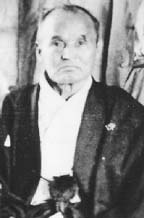
Choi, now living under the employee of Takeda in Hokkaido, was not treated as an adopted son by Takeda, as legend has led many Hapkido practitioners to believe. Choi, in fact, was simply an employee of Takeda.
We must place this association into historical perspective to understand the relationship between Takeda and Choi. At this juncture of history, the Japanese viewed themselves as the "Divine race." Koreans were simply thought of as a conquered people. Takeda, perhaps came to be fond of Choi, but due to his cultural programming, he would never have accepted him as a son.
Certainly, there were affluent individuals, of Korean descent, who lived in Japan during this period and were more readily assimilated in Japanese martial culture. For example, the credentials of Jang, In Mok and his study and certification in Daito Ryu under the direction of Toshimi Matsuda, who was certified to teach, (Kyoju Dairi), by Takeda, are easily verifiable. Unfortunately, Choi did not possess this status and was forced to live a life supported by labor.
Though it is impossible to say where this myth that Choi was the adopted child of Takeda was originally born, all of those who propagate this falsehood in the West base their knowledge upon one interview conducted with Choi in 1982. It may simply be that Choi's statements were misinterpreted or mistranslated in this interview, as the statement of him being the adopted son of Takeda was never mentioned in any media report in Korea. It must be emphasized that it is factually inaccurate to perpetuate the belief that Choi was the adopted son of Takeda.
Takeda's own son, Tokimune Takeda, stated that he never knew Choi, Yong Sool. This may be explained by the fact that Takeda possessed two distinct households. Only one of which housed his family. Or, that Tokimune Takeda simply wanted to disavow Hapkido's link to Daito Ryu due to cultural reasons. In any case, Japanese immigration records, of the late 1930's and early 1940's, list Choi, under his Japanese name, as an employee of Takeda.
Choi remained in the employ of Takeda for thirty years until April 25, 1943 when Takeda died. At that point he took his leave from the house of Takeda and shortly thereafter returned to Taegue, Korea.
It must be noted that there is no historic record of Choi ever being certified as a student or teacher of Daito Ryu. The myth that Choi lost his certificates while returning to Korea is a falsehood as there are in depth records of every Daito Ryu Aikijitsu student kept in Japan. Choi, by his Korean or Japanese name, was never listed as a student. This fact substantiates the relationship between Choi and Takeda. Choi, however, for decades was under the direct influence of the art. He obviously mastered its techniques.
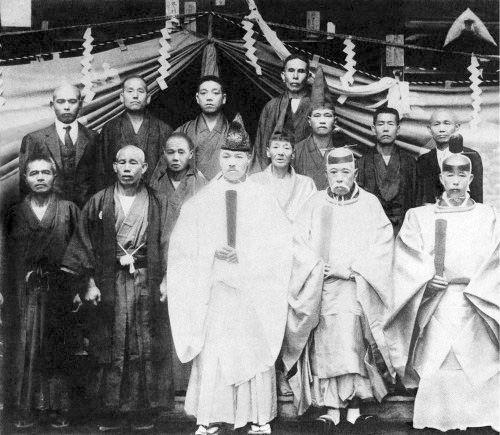
This photograph, taken in the early 1900's, shows Takeda Sokaku, Ohbata Shigeta, Hiratsuka Katsuharu, Yoshida Kotaro and several other men. It is sometimes claimed to also depict Choi, Yong Sool (first row, second from the left). Initially, it must be noted that employees, especially those of Korean decent, were never photographed with their Japanese superiors. Furthermore, the name of this man was Takuzo Kawatani. This individual was an associate of Hiratsuka Katsuharu.
The Birth of Hapkido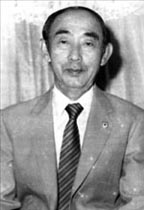
As stated, Choi remained with Takeda for thirty years until Takeda's death. Relieved of his duties, Choi returned to Korea. Choi's first student was a successful brewery manager named, Suh, Bok Sup. Prior to his study with Choi he had been awarded a 1st Dan Black Belt in Judo, under the direction of Korean Judo instructor, Choi, Yong Ho. In February of 1948, the twenty-four year old Suh witnessed Choi, who was then in his forties, get into a fight with several men. Choi rapidly devastated his opponents. Impressed with his technique, Suh summoned Choi to his office and inquired as to his style. This meeting eventually lead to Suh hiring Choi, who had previously been a poor rice cake seller and hog farmer since his return to Korea. Choi would teach Suh for several years privately, eventually also became a bodyguard for Suh's father, Suh, Dong Jin.
Suh, Bok Sup became instrumental in helping Choi open his first school of self defense, which was established in February of 1951. He also became his first Black Belt. Due to Suh's advanced understanding of Judo, Suh lent some of this knowledge to the system which later became known as Hapkido. Many of the basic sleeve grabs, shoulder grabs, and throws, used in Hapkido, can trace their origin to Judo.
The initial name of the system of self defense Choi taught was, Dae Dong Ryu Yu Sool. This is the Korean translation for Daito Ryu Jujitsu.
Initially, Choi taught his students a very pure form of Daito Ryu Aikijitsu. Many of the later students of Hapkido attempt to falsely date the origin of Hapkido to some ancient Korean art. This is historically inaccurate. Choi, himself, never made this claim.
As time progressed and other Korean martial art pioneers, such as General Hong Hi Choi (Taekwondo) and Hwang Kee (Tang Soo Do) were rediscovering and expanding upon the offensive nature of Tae Kyon, their discoveries influenced some of the advanced students of Choi, such as Ji, Han Jae, who slowly began to incorporate the very aggressive punching and kicking techniques into the overall understanding of Hapkido. Choi, himself, never taught kicking in association with Hapkido, however.
Hapkido's final criteria came through a slow testing period, as did the other martial art systems born on the newly independent Korean Peninsula. Even the name Hapkido went through various changes, including: Yu Kwon Sul, Yu Sool, Ho Shin Mu Do, and Bi Sool.
Today, there is no one system of Hapkido, as is the case with WTF Taekwondo, for example. As time has gone on, each teacher and ensuing organization has integrated their own understandings and self defense realizations into this art. There are, however, two distinct types of Hapkido. The first are the schools which hold tightly to the original teachings of Choi, Yong Sool. This style of Hapkido will commonly be observed when visiting or studying in the Hapkido dojangs located in the Taegue vicinity of South Korea. Here, the focus is placed primarily upon the Daito Ryu based joint locks, deflections, and throws. The second distinct style of Hapkido is those instructors, schools, and organizations who trace their lineage to Grandmaster Ji, Han Jae — whether directly or indirectly. In these schools one will observe a plethora of punching, kicking, and weapon techniques, in association with the joint locks and throws commonly associated with Hapkido. This style of Hapkido will commonly be observed at the dojangs based in Seoul, South Korea and, in fact, most of the Western world.
The continued evolution of Hapkido is a good thing. It has allowed the art to change and embrace the needs of each student in their own unique way.
Ji, Han Jae and the Evolution of Hapkido
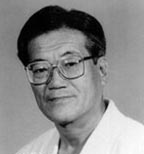
Ji, Han Jae was born in Andong, Korea in 1936. He was a student of Choi, Yong Sool between approximately 1949 and 1956. He opened his first school, known as An Mu Kwan, in 1956 in Andong, South Korea. Later that year, he moved his school to Seoul and shortly there after renamed it, Sung Moo Kwan. At that time he held the rank of 3rd dan Black Belt in Hapkido, then known as Yu Kwan Sul.
Ji is said to have additionally studied the ancient Korean martial arts and meditation from a Taoist monk referred to only as, Taoist Lee. Ji states that he combined the techniques of his two teachers and invented the term Hapkido in 1959. Original students of Choi, Yong Sool say, however, that the term Hapkido was first used by Choi before Ji decided to use the name. Thus, this issue may never be fully resolved as to who first used the name. But, it is of little historic importance.
It must be noted that due to the fact that Ji relocated to Seoul, he was central to the homebase of the evolving Korean martial arts. As such, he was exposed to the advanced kicking techniques which were being integrated into these modern systems of self defense. Thus, he was one of the primary people who integrated the advanced methods of offensive and defensive kicking into Hapkido. In addition, he was the first instructor to add such weapons to the art as the short and middle staff, known as Don Bong and Jung Bong respectively, and the Hapkido cane.
Due to his strategic location and dynamic personality, he became a very influential figure in the development and evolution of Hapkido. He was the instructor of many Hapkido practitioners who later become very famous masters of the art and spread Hapkido across the world. These students include: Kwon, Tae Mon (one of his first students and a man who helped introduce Hapkido to the United States), Myung, Jae Nam, Choi, Sea Oh, and Han, Bong Soo — to name just a few. As such, Ji has done more to expand upon the original system of Hapkido and to promote the art around the world than any other individual. There are more direct and indirect student of Ji, Han Jae's style of Hapkido than any other Hapkido instructor in history.
Several of his original students no longer wish to be associated with him, however, due to differing personal ideologies. Thus, many Korean instructors no longer reference him as the source of their knowledge. Instead, they claim they studied directly from Choi, Yong Sool — though this is factually not the case.
In 1961, Ji was joined in Seoul by Kim, Yong Jin who opened the Oh Ji Kwan school of Hapkido. Soon after that, Kim, Moo Hong established Sin Moo Kwan Hapkido.
In 1967, Ji initiated the use of the eagle as the logo for Hapkido. Later that same year, the first text book on Hapkido was written by Nyung, Kwan Shik and Kim, Jong Tek.
In 1968 another student of Ji, Myung, Kwan Shik, opened a new Hapkido Kwan in Seoul. It was called Young Moo Kwan.
In 1969, Ji first visited the United States and was introduced to Bruce Lee by the man who brought Taekwondo to the United States, Jhoon Rhee. He later appeared in Bruce Lee's film, "Game of Death."
In 1984, Ji officially relocated to the U.S. and formed, Sin Moo Hapkido. "Sin," referring to "Higher Mind," and "Moo," to "Warrior Ways."
Historically, it can be understood that Ji, Han Jae was one of the most influential and instrumental proponents of the art of Hapkido — no matter who invented the name. Though he greatly expanded upon the art, as many advanced masters have done, he was, none-the-less, a direct student of Choi, Yong Sool. Thus, he did not invent the art. The foundation of Hapkido must be ultimately attributed to Choi, Yong Shul.
Hapkido's Governing Bodies
By the early 1960's the various South Korean based schools of Hapkido were already fragment from the original teaching of Choi, Yong Sool. Seeking an official governing body, advanced teachers the art petition the Korean government for a formalized organization. On September 2, 1963, the Korean Ministry of Education granted a charter to the Korea Kido Association. This extended this organization the right to supervise and regulate the standards of teaching, as well as promotion requirements for Hapkido and thirty additional Korean martial arts which had not congregated under the banner of Taekwondo. The first chairman of the Korea Kido Association (Ki Do Hae) was Choi, Yong Shul. Its first President was Lee, Kyu Jin, who held this position for two terms. Ji, Han Jae and other Korean Hapkido masters were additionally on its Board of Directors. In 1967, a new President, Kim, Du Young was elected. He held this position for several terms. On 26 January 1978, at the eighth Ki Do Hae election, a new president, Choi, Byung Rin, was elected. And, Choi, Byung Gu was elected the new Chairman. At the ninth Ki Do Hae election, held on 5 April 1981, Pyo, Si Chan was elected the organization's new president.

On the 1st of June, 1983, at the tenth Ki Do Hae election, Suh, In Hyuk was appointed the Chairman and Seo, In Sun was elected its president. Seo was the first non-politician and actual martial art master instructor to hold this appointment. He maintained this position until 2002. He remains president of the World Ki Do Federation and in 2003 he founded Han Min Jok Hapkido Association in Seoul, South Korea.
The Evolution of the Korea Hapkido Association
As time progressed, fragmentation of Hapkido continued. This was due to ongoing individual differences. In 1965, Ji, Han Jae left the Korea Kido Association. He formed and became President of Daehan Hapkido Hae, The Korea Hapkido Association. This association was formed with the blessing of then South Korean President Park, Chung Hee.
The reason President Park was so in favor of this new organization was, in no small part, due to the fact that Park, Jong Kyu, a student of Ji, Han Jae and head of the Presidential Protective Forces, was an instrumental element in its formation. In 1973 Ji, Han Jae resigned from this organization, with the hopes of taking many of its members with him and bringing them to a new organization he was instrumental in creating: The Republic of Korea Hapkido Association.
What is now known as the Korea Hapkido Association has gone through several incarnations. Its presidents have included, in addition to Ji, Han Jae: Kim, Woo Choong, Kim, Gye Ho, Park, Dow Soon, and Hwang, Duk Kyu.
Myung, Jae Nam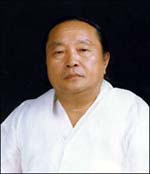
Another essential figure in the development of Hapkido is Myung, Jae Nam. Myung was born on 31 December 1938. He began his Hapkido training in 1958 under the direction of Ji, Han Jae at Ji's Joong Boo Si Jang studio in Seoul. He trained next to several other influential Hapkido Masters, including: Han, Bong Soo and Choi, Sea Ho. Myung was one of the original Masters on the board of directors of the Korea Hapkido Association and was awarded his 8th Dan by Ji, Han Jae in 1972.
Prior to this, however, it is interesting to note that in 1965, Myung, Jae Nam was the only master of Hapkido to heartily welcome a Japanese Aikido instructor, Hirata Sensei, who was touring Korea. The less than warm reception for a visiting Japanese Sensei was obviously due to the remaining Korean distaste for the Japanese due to Japanese occupation. For the next several years, Myung exchanged techniques with the man. Myung eventually formed an alliance with Japanese Aikikai. In 1969, when Myung formed his own organization and named it, Han Kuk Hapkisool Hae, the certificates he issued had the name of Aikido's founder, Uyeshiba Morihei on them in association with his own.
From that point forward, until his death in 1999, Myung, Jae Nam was the Korean representative for Aikikai. In his version of Hapkido there are many Aikido based techniques.
From 1969 forward his organization continued to evolve. In 1972 he moved the location of his headquarters from Inchon to Bukchang-Dong, Chung-Ku, in Seoul and renamed his organization Han Kuk Hapki Hae, The Korea Hapki Association. In 1974 he changed the name to Kuk Jae Yong Meng Hapki Hae. This organization is more commonly known as, The International Hapkido Federation.
The Korea Hapkido Federation
The birth of the Korea Hapkido Federation can be traced to Ji, Han Jae. In 1973 he brought together two other advanced masters of Hapkido: Kim, Moo Wong and Myung, Jae Nam — both of these men were originally his students. They untied their individual Hapkido organizations and named the newly formed association, Daehan Hapkido Hyub Hae, The Republic of Korea Hapkido Federation.
Ji was the first founding leader to leave this association. Myung eventually left, as well. Upon his exit, Ji reclaimed the organizational name he had used prior to this and called his reformed organization, The Korea Hapkido Association. This was, however, the name also adopted by the remaining members of The Republic of Korea Hapkido Federation.
Park, Sung Chul was elected President of the Korea Hapkido Association. Through a long and oftentimes historically debated process of evolution, in 1988 a new organization emerged from the foundations of these previous groups. It was known, in English, as The Korea Hapkido Federation. Oh, Se Lim is its president.
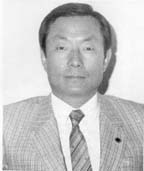
Today, The Korea Hapkido Federation is the largest, wholly Hapkido, governing body for Hapkido in the world — made up of predominately South Korean born students and instructors or those individuals who have directly trained in South Korea.
Historic Note: When The Korean Hapkido Association changed its name to The Korea Hapkido Federation, Park, Sung Chul, remained it president for a short period of time. For this reason, there are a few Hapkido practitioners, who received Black Belt dan ranking during this interim, who have their Korea Hapkido Federation Dan certificates signed by President Park.
Another important point to note is that, there is a separate organization based in Seoul, South Korea, The Korea Hapkido Association. Its President is Hwang, Duk Kyu. The Korea Hapkido Association uses a different logo — the eagle. This organization can also trace its foundation to Ji, Han Jae.
Prior to 1990, the Korean Hapkido Federation, and all other South Korean based non-Taekwondo martial art organizations, were required to be a part of the South Korea Amateur Athletic Association, (which was the equivalent to holding non-profit status), and to register their Black Belts with the Korea Kido Association (Ki Do Hae), if they wished their students and instructors to possess Korean certification. In 1990, governmental and organizational laws changed in South Korea and the various established martial art organizations were allowed to become financially based entities. Due to this fact, the Korean Hapkido Federation and other established Korean martial art organizations broke away from Ki Do Hae and were allowed to offer promotions without Ki Do Hae approval.
During this period of change in South Korea, in 1990, Korea Ki Do Hae expanded and instituted a new branch of operation known as, The World Ki Do Association. This branch of Ki Do Hae was formed to supply legitimate non-Korean martial artists with rank recognition from South Korea.
Hapkido in the United States
Hapkido was formally introduced into the United States in 1964 by then twenty-eight year old, Choi, Sea Oh (Sea Oh Choi). At that time he held the rank of 5th dan Black Belt.
In the first article describing Hapkido to the United States, published in August 1965 by Black Belt Magazine, Choi explains that in association with Ji Han Chei (believed to be Ji, Han Jae), Choi, who was also a black belt in Tang Soo Do and Ji helped to add Korean kicking and offensive techniques into the base defensive methodology of what was then called, Daito-Ryu Yawara, helping to make it a more completely system of self-defense. Thus, Choi was one of the instrumental components of making Hapkido the expansive art it ultimately became.
Though not the first Hapkido Black Belt to immigrate to America, he was the first instructor to formally open a Hapkido school in the United States. The name of the school was the Hapki-Jujitsu School of Self Defense. It was located at 821 Temple Street in Los Angeles, California. He later relocated his school to 721 S. Western Ave. Master Choi retired from teaching Hapkido in the mid 1970's, at the rank of 6th dan, to pursue a career in architecture and interior design.
The Factors That Created Taekwondo
Taekwondo, The Way of the Fist and Foot, is an advanced systems of martial arts known for its aggressive linear attacks and its refined elaborate kicking techniques. Taekwondo is the most practiced system of martial art in the world and was introduced as an Olympic Sport in 1984.
What is known as Taekwondo today, has gone through a long process of evolution since its inception at the end of World War II. In post war Korea, with brutal Japanese occupation lifted, Korea went through a period of cultural revitalization. During this process, the martial arts, which were banned by the occupying forces, found a new resurgence. The Korean people, who swore to never be over powered again, embraced the proliferation of the martial arts through out the nation. From this, came the birth of the modern Korean martial arts.
Chung Do Kwan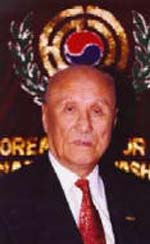
Chung Do Kwan was the first kwan or school of the modern Korean martial arts to be established on the newly liberated Korean Peninsula. The name Chung Do Kwan means, "The School of the Blue Waves." This represents a youthful spirit and vitality. The system was founded by Lee, Won Kuk and the school was located in Seoul.
Lee began his career in the martial art when he traveled to Japan in 1926, at the age of nineteen. He attended Chuo University. During his time at the University he be became exposed to Shotokan Karate and is said to have studied directly from the founder of the system, Funakoshi Sensei.
Lee eventually returned to Korea and began teaching the martial arts in September of 1944. The location of his kwan was at the Yong Shin School in the Suh Dae Moon Gu section of Seoul.
During the period of Japanese occupation it was virtually impossible for a Korean national to open a school of martial arts in their homeland. Due to Lee's close relationship with the Japanese Governor General of Korea, Lee was allowed to open his school of Karate. This led to widespread rumors and deep distrust of Lee that he was a Japanese sympathizer. In fact, upon Korean independence in 1945, Lee stood trial for his Japanese affiliations — which caused him to temporarily close the doors to his school. He was not convicted and upon his acquittal he became very proactive in his stance about Korean independence and formed a tight alliance with the Korean National Police. So much so, that when the Chung Do Kwan was reopened at Gyun Ji Dong, Si Chun Gyo Dang, Jong Ro Gu, Seoul, in April of 1946, it became referred to as the National Police Headquarters dojang.
In 1951, due to the age of Lee, Won Kuk , he asked Son, Duk Sung to take over as the Grandmaster of the studio, which he did.
Many of the Korean schools of martial arts were closed during the Korean War. Chung Do Kwan was no exception. It reopened its doors for the second time in 1953. By this point, however, the founder, Lee Won Kuk rarely visited the school. Son, Duk Sung and the instructors he either trained or respected became the primary instructors of the kwan.
There is an interesting fact regarding the Chung Do Kwan. Son, Duk Sung was the instructor who provided General Choi, Hong Hi with his 4th Dan certificate. Son, details that this was an honorary degree. He later canceled this certificate, and revoked Choi's honorary Kwajang (Grandmaster) status when General Choi sent him a 6th Dan certificate which he insisted that Son must sign. Son also expelled Nam, Tae Hi, from Chung Do Kwan during this same time period. Choi and Nam were the founders of the Oh Do Kwan, which will be discussed later in this paper.
As time progressed, several Kwans which derived their basis from Chung Do Kwan opened in Korea.
They include:
1) Kuk Mu Kwan, founded by Kang, Suh Chong,
2) Jung Do Kwan, founded by Lee, Yong Woo,
3) Chung Ryong Kwan, founded by Ko, Jae Chun,
4) Oh Do Kwan, founded by Choi, Hong Hi and Nam, Tae Hi.
Chosun Yun Moo Kwan — Ji Do Kwan
Yun Moo Kwan is one of the five original schools of martial arts established on the newly liberated Korean peninsula at the conclusion of World War II. The founder of this system was, Chun, Sang Sup.
The evolution of Yun Moon Kwan began in 1931 when, Lee, Kyung Suk, a Korean national who taught Japanese Judo, established the Chosun Yun Moo Kwan school in Seoul. Post World War II, Lee, Kyung Suk asked Chun, Sang Sup to set up a course of Kwon Bop at his school. Kwon Bop is the Korean name for Japanese Karate. This program was named, Chosun Yun Moo Kwan Kwon Bup Bu.
Chun, Sang Sup began his martial arts training in Judo while in high school. He then relocated to Japan to attend, Dong Yang Chuck Sik College. It is during this period that he was exposed to Shotokan Karate and is believed to have earned the Black Belt.
Upon retuning to Korea, Chun, Sang Sup is understood to have secretly taught Shotokan Karate to private students — beginning in approximately 1940. This is how the owner of the Chosun Yun Moo Kwan was aware of Chun. As this practiced was outlawed by the Japanese occupying forces, his teaching was not formally recorded until he established his training method at the end of World War II.
Chun, Sang Sup enlisted the help of Yoon, Byung In to teach at Chosun Yun Moo Kwan. Yoon was a 4th Dan in the Okinawan based system of Shudokan Karate — which was established by Sensei Toyama, Kanken.
Yoon, Byung In taught at the Chosun Yun Moo Kwan for approximately one year before breaking away and forming his own organization, Chang Moo Kwan. Chun, Sang Sup then took over full time teaching responsibilities. His teaching continued until an evil twist of fate found him kidnapped and imprisoned by the North Korean military during the Korea War. He was never heard from again and was eventually believed to be dead.
At this juncture, Chosun Yun Moo Kwan Kwon Bup Bu teaching passed to the hands of Yoon, Kwe Byung. He renamed the school, Ji Do Kwan, "Wisdom Way School."
Yoon, Kwe Byung was against unifying the various Korean schools of martial arts under the banner of Taekwondo. Like Kee, Hwang, the founder of Tang Soo Do Moo Duk Kwan, he wanted Ji Do Kwan to remain free from organizational control. This did not sit well with the other members of Ji Do Kwan, however, and Lee, Chong Woo was elected the new president of Ji Do Kwan.
Lee, Chong Woo forged the Ji Do Kwan into one of the leading schools of martial arts in modern Korea. Its practitioner were noted for their consecutive wins at South Korean sparring competitions. In addition, Lee has held several pivotal positions with the Korea Taekwondo Association and the World Taekwondo Federation throughout the years.
Ji Do Kwan pays tribute to its Shotokan (Song Do Kwan in Korean) and Judo influence in its emblem. This emblem depicts two circle. If the upper circle is removed, the central circle of the Shotokan emblem is reveals. The outer ring depicts the pattern of the Kodokan Judo emblem.
Presidents of Ji Do Kwan:
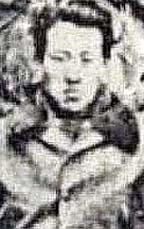 Founder, Chun, Sang Sup
Founder, Chun, Sang Sup 2nd President: Yoon, Kwye Byung
2nd President: Yoon, Kwye Byung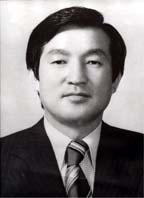 3rd and 5th President: Lee, Chong Woo
3rd and 5th President: Lee, Chong Woo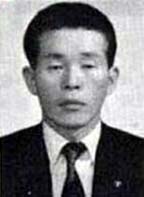 4th President: Bae, Young Ki
4th President: Bae, Young Ki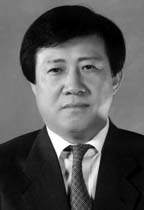 6th and current President: Lee, Sueng Wan
6th and current President: Lee, Sueng Wan
Moo Duk Kwan
There are two distinct schools of Moo Duk Kwan which evolved from a single source in modern Korean. The first is most commonly known as Tang Soo Do. The second is the Moo Duk Kwan division of Taekwondo. To understand how these two separate governing bodies came into existence we must first view the birth of this system of self defense.
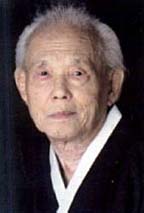
Tang Soo Do Moo Duk Kwan was founded by Kee, Hwang.
Kee, (Hwang, Ki Chang). Hwang was an expatriate of Korea during much of its Japanese occupation. He details that he initially studied the Korean arts of Soo Bak Do and Tae Kyon in his homeland before leaving Korea in 1936 to immigrate to China and work for the Southern Manchuria Railroad.
In early interviews, Kee, Hwang, states that he studied numerous systems of Chinese martial arts while living in China. He goes on to detail that, "At that time, in China, the instruction was not publicized like it is now. Most instructors introduced techniques to only a few people. Only people who would not misuse the knowledge they were allowed to study."
Later, it began to be detailed that he also studied a system of Karate while located in this region. Though none of this has ever been substantiated — which has lead to an enormous amount of debate as to where he actually came upon his advanced knowledge of the martial arts. None-the-less, he is one of the formative figures who directed the modern Korean martial arts towards worldwide acceptance.
Kee, Hwang formalized his system of self defense on his birthday, 9 November 1945. Post Korea Independence, in 1946, the system which was later to become commonly known as Tang Soo Do begin to be taught at the Yong San Railway Station in Seoul. It was called, Tang Soo Do Bu. The organization was named, Kyo Tong Bu Woo Hae.
The Korean term, Tang Soo, literally translates as, "Knife Hand." The Japanese character used to depict this term is the same one used in Kara-te.
Due to the fact that the first school of Tang Su Do Moo Duk Kwan existed within a railway station, many of Hwang Kee's first students were railway employees.
The school flourished for many years. Then, due to the Korean War, the school was closed on June 25, 1950. When it reopened, Kee, Hwang had changed the name to Moo Duk Kwan.
In 1953, Tang Soo Do Moo Duk Kwan began to evolve. It changed its official title to the Korea Soo Bahk Do Association. By 1955 this organization had ten gymnasiums with its central headquarters near Seoul Station in the Jong Gu section of Dong Ja Dong. During this same year, the Korea Su Bahk Do Association hosted it first Sino-Korean martial art championship.
In 1965, the various Kwans of the modern Korean martial arts were merging under the banner of Taekwondo. Kee, Hwang resisted this trend — wishing to maintain control over his organization. Due to this fact, two advanced students of Kee, Hwang: Im, Young Tek and Hong, Chong Soo broke away from their teacher, formed their own branch of Moo Duk Kwan, and became a part of the Korea Taekwondo Association. From this act two distinct systems of self defense bearing the title Moo Duk Kwan emerged.
The first president of Taekwondo Moo Duk Kwan was Lee, Kang Ik, elected on 20 November 1965.

Hong, Chong Soo was elected the third President of Taekwondo Moo Duk Kwan on 27 July 1971. In February of 1974 he was appointed the Vice President of Kuk Ki Won. Many advanced instructors of Tang Soo Do Moo Duk Kwan followed the lead of breaking away from Kee, Hwang and became part of the Taekwondo branch of Moo Duk Kwan. Though the two Moo Duk Kwans are relatively similar in style and structure, and most Korean Moo Duk Kwan Masters draw their lineage from Kee, Hwang, the two Moo Duk Kwans possess differing forms and a somewhat differing focus upon self defense. The Taekwondo branch of Moo Duk Kwan does, however, possesses substantially more members, approximately five hundred thousand.
Moo Duk Hae
By the late 1970s Taekwondo Moo Duk Kwan, in its ongoing effort to congregate under the banner of the World Taekwondo Federation, renamed itself Moo Duk Hae. This was done in an effort to make the organization more of a fraternity and less of a martial art governing body. Though this name was formally adopted by its board of directors, few practitioner outside of South Korea know this fact, as most instructors who have foundational allegiance to Moo Duk Kwan still use this more commonly known name.
The Midnight Blue Belt
One interesting note is that Tang Soo Do does not use the traditional Black Belt in it's ranking system, as is common with the other Korean martial arts. Black is the color where all other colors merge. Any color which is mixed with black, also become black. For this reason, Kee, Hwang details that a person who wears a Black Belt believes that they are a master. The martial arts, however, are a continual learning process. Thus, no one can ever truly master the martial arts. As such, the Tang Soo Do practitioners wear the Dark Blue Belt.
Moo Duk Kwan Presidents:
• Hwang Kee
• Lee, Kang Ik
• Hong, Chong Soo
• Kim, In Seok
• Choi, Nam Do
• Hong, Chong Soo
• Kim, Dong Kook
• Chon, Jae Kyu
Chang Moo Kwan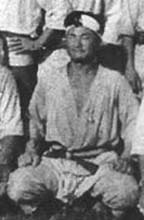
Chang Moo Kwan was founded at the YMCA in the Jong Ro section of Seoul in 1946 by Yoon, Byung In. During Japanese occupation, Yoon is said to have studied a Chinese system of self defense in Korea known as, Joo An Pa — more commonly known as, Chuan Fa. He then relocated to Japan to attend Nihon University. While there, he studied Karate under the direction of Kanken Toyama, founder of Shudokan Karate. It is claimed that he eventually earned the rank of 4th dan Black Belt in this system of Karate. It is also stated, in some documents, that he was the Captain of the Karate Team at Nihon University -- though there is no substantiated data to prove this claim.
Upon Korean independence, Yoon returned to his homeland and in 1946 opened the YMCA Kwon Bup Bu or Chang Moo Kwan. Initially, he had over five hundred students. But, his training method was so severe that it is rumored that less than two hundred students remain after only a few months.
Yoon, Byung In became missing-in-action during the Korean War. After the war, two of Yoon's senior students: Lee, Nam Suk and Kim Soon Bae reopened the school at the YMCA.
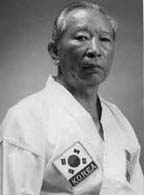
Important Dates in Chang Moo Kwan:
In 1946, Lee, Nam Suk was named the first official instructor of Chang Moo Kwan by its founder Yoon, Byung In. In 1953, he became the second president of this organization. From 1961 forward, he held several pivotal positions in the Korea Taekwondo Association, including Vice President.
Lee, Nam Suk was born in Yeo Joo, Korea, in 1925, When he was five years old his family moved to Seoul, where he was educated, eventually earning a degree in Electrical Engineering. He passed away in Southern California in late 2000.
Kang Duk Won
As the second incarnation of Chang Moo Kwan came into existence in 1953, Lee, Nam Suk and Kim, Soon Bae begin to have conflict with two other senior students of the kwan: Hong, Jung Pyo and Park, Chul Hee. These two men left and formed Kang Duk Won, "House of Teaching Generosity," in the nearby Shin Sul Dong district of Seoul in 1956.
Song Moo Kwan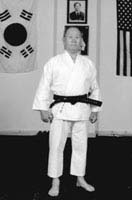
Song Moo Kwan was founded in Kae Sung City, Kyung Ki Providence, Korea by Ro, Byung Jick on March 11, 1944. As was the case with Chung Do Kwan, it was actually established prior to the end of Japanese occupation. The original classes of the kwan were taught at the Kwan Duk Jung, School of Archery.
Due to the repressive political conditions, the kwan was forced to close its doors a few months later. It was not until May 2,1946 when Ro, Byung Jick could reopen his school in Dong Hung Dong, Kae Sung City.
On June 25, 1950, Song Moo Kwan, which mean, "The Ever Youthful House Of Martial Arts Training," again closed its doors — as did most of the other kwans, due to the onset of the Korean war. On September 20, 1953 the school was reestablished in Ah Hyung Dong, Mapo Gu, Seoul.
Beginning in 1936, Ro, Byung Jick studied Shotokan Karate alongside Chung Do Kwan founder, Lee, Won Kuk, from its founder, Gichin Funakoshi in Japan.
Oh Do Kwan
Oh Do Kwan was founded by General Choi, Hong Hi and Nam, Tae Hi. Both of these men were advanced military officers in the newly formed army of liberate Korea. Their classes were originally taught at the Korean 3rd Army Base, Yong Dae Ri.
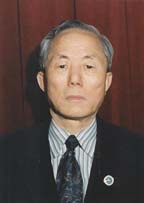
Choi, Hong Hi was born into a prominent Korean family. He relocated to Japan in his adolescence to further his education. While there he began to study Shotokan Karate and was eventually awarded the Black Belt. At the point when World War II broke out, he was forced into the service of the Japanese military. Post World War II and the defeat of the Japanese occupying forces, he became a pivotal figure in the newly formed Korean military.
Nam, Tae Hi became a student of Chung Do Kwan immediately after Korean Independence. He quickly became a master of the art and begin teaching at the Korean Army Military Signal School in 1947. During that same time period, Nam met Choi, who was a member of the of the 29th Infantry Division, based in Cheju Do. This laid the foundation for the Oh Do Kwan.
As the years progressed, in no small part due to General Choi's senior position in the Korean military, Oh Do Kwan became the central focus of the martial arts taught to the Korean Army. The rank of Black Belt was only accepted and transferable from student of Chung Do Kwan. Those practitioners who held Black Belts from other kwans had to be retrained and retested to be considered for official Black Belt status. This formulation at the hands of General Choi was questioned by many practitioners of the modern Korean martial arts. It, none-the-less, was the impetus of what brought the Korean martial arts together under the banner of Taekwondo.
The Other Kwans
It is essential to note that though the previously described kwans came into existence at the end of Japanese occupation and remained established schools of the modern Korean martial arts, there were at least eighteen other kwans that were founded just after the end of World War II but did not survive. In some cases the founder of the kwan merged his school with one of the other kwans. In most cases, however, the kwan and its founder simply faded from the pages of Korean history.
Taekwondo
The unification of the Korean kwans, congregating under one banner, began in the early 1950's, when the leaders of the various schools first began to come together and attempt to form a central governing body. Due to the outbreak of the Korean War, however, these initial attempts did not prove to be successful.
During this period of war, several kwan leaders who were living in the Korean wartime capital of Pusan, formed an alliance and vowed to created a governing body. These kwan leaders were: Lee, Nam Suk, Ro, Byung Jick, Kim, In Hwa, Jo, Young Joo, Yoon, Kwe Byung, Son, Duk Sung, Lee, Chong Woo, and Hyun, Jong Myun.
Post the Korean War, the kwan leaders joined forces and set about formalizing an organization. They named this governing body, The Korea Kong (Tang) Soo Do Association. The term Kong Soo Do was adopted due to the fact that this was the term commonly used to describe Kwon Bop (Karate) in the Korean language.
Due to the commonplace occurrence of Korean politics being deeply embedded into all aspects of Korean culture, the first President of the organization was, Jo, Young Joo, the head of the Association of Korean Residents in Japan. He was soon followed by a new president, The Republic of Korea Minister of Finance, Lee, Joong Jae. Ro, Byung Jick was elected its Director and Lee, Chong Woo the Secretary General.
The focus of this organization was to provided a standardized system of testing. As each kwan leader had their own system of teaching and testing, this proved to be problematic. None-the-less, the first two testes were given at the Central Dojang of the Chung Do Kwan, which was actually located in the Si Chun Church, when it was not in use for worship. The next two testes were given at Chae Shin Bu Dojang.
At this point in time, the rank of 4th dan was the highest degree awarded by the Korea Kong Soo Do Association. This rank was given to the early kwan founders and the advanced teachers of the systems.
As detailed previously in the Kwan History Section, there was dissension among some founders of the original Korean kwans virtually immediately. They were dissatisfied with the promotion standards within this organization. Two of the leaders of this discord were Kee, Hwang (Moo Duk Kwan) and Son, Duk Sung (Chung Do Kwan). Kee, Hwang was the first to leave the organization. He left one month after the organization was formalized. His departure was in no small part due to the fact that he was not given a position on the Central Testing Committee, which set the standards for the organization. Approximately one month later, Son, Duk Sung removed his group, Chung Do Kwan, from the organization for the same reason.
It was less than a year before this organization began to experience serious problems. Kee, Hwang was pushing forward with having the Korea Amateur Sports Association grant formalized status to his Korea Tang Soo Do Association. Though this attempt eventually failed, due to the fact that a key player in the Korea Kong Soo Do Association, Ro, Byung Jick blocked this attempted, other kwans who had not become formalized within this group, such as: Han Moo Kwan, Jung Do Kwan, and particularly Oh Do Kwan were holding their own promotional testing.
It was particularly the Oh Do Kwan that eventually cause the Korea Kong Soo Do Association to fail. Due to the influence General Choi's Oh Do Kwan had with the military and, thus, the government, without its support a successful central association was virtually impossible.
In 1959 General Choi petitioned the Ministry of Education and the Korea Amateur Sports Association to found a new organization. Due to his close ties to Korean President Rhee, Seung Man, the acceptance of this organization was virtually assured.
General Choi coined the name Taekwondo and substantiated it in the minds of the Korean public by having the students of the art yell, "Tae Kwon," each time they executed a technique. Though there were several names considered, and extensive debate went on, particular at the hands of Kee, Hwang, the five primary kwans: Chung Do Kwan, Oh Do Kwan, Song Moo Kwan, Chang Moo Kwan, Ji Do Kwan, and Moo Duk Kwan came together and the name Taekwondo was finally accepted due to the fact that it closely reassembled the name of the ancient Korean martial art, Tae Kyon. As every Korean male was duty bound to serve in the military, they were each indoctrinated into the Taekwondo method of the martial arts. In 1959 the Korea Taekwondo Association was formalized.
The Korea Taekwondo Association
In 1959 the affiliated Korean kwans finally became formalized as The Korea Taekwondo Association. General Choi, Hong Hi was elected its President. Ro, Byung Jick of the Sang Moo Kwan and Yoon, Kwe Byung of the Ji Do Kwan were elected the Vice Presidents. Hwang Kee of Moo Duk Kwan was appointed the Chief Director.
Hwang Kee's participation in this organization was short lived, however. He broke away from in the same year.
In 1960, when Korea underwent a period of internal chaos, due to the fact of President Rhee's extensive corruption being revealed, the Korea Taekwondo Association collapsed. Hwang Kee was one of the strongest proponents of unseating the president.
During this period of disruption, Hwang Kee was finally granted governmental recognition for his organization, the Korea Soo Bahk Do Association, by the Korea Amateur Sports Association and the Ministry of Education.
It was not until 16 May 1961, however, when President Rhee was overthrown by a military coup de tat that the leaders of the Korean martial arts would finally be forced to formalize into one body. In fact, it was Governmental Decree #6, of this coup, where it was detailed that all schools of the Korean martial arts must come together under one banner.
The Korea Tae Soo Do Association
Due to this decree, the leaders of the kwans again came together and attempted to formalize under one organization. Heated debated went on throughout 1961. The group emerged with the name the Korea Tae Soo Do Association.
As was the case with the Korea Kong Soo Do Association, the primary concern was formalized teaching and promotion standards. To help to achieve this, an inspection team was sent up and deployed to the various kwans in order to propagate the fact that they must use standardized Hyung (forms) and Taeryun (free sparring) techniques.
Though the Korea Tae Soo Do Association was the institution to lay the foundation for what was to become Taekwondo, there was still a large amount of infighting. Many of the advanced members did not like the fact that they were being dictated on how they must teach and advance their students. Again, at the forefront of this controversy was Hwang Kee. On 20 July 1962, Hwang Kee wrote his initial letter withdrawing Moo Duk Kwan from the organization.
In is important to note that due to General Choi's close association with ousted President Rhee, (though he was instrument in the coup), he did not play an important role in the formation of this organization. In fact, though he once held the pivotal positions of Commander of the 6th Korean Army and Director of Intelligence, to name only two pivotal positions, he was extremely disliked by the new Korean President, Park, Chung Hee. General Choi attributes this to the fact that President Park did not like him because of the fact that he was once his superior officer. As such, Choi was forced to resign from the military and was sent to Malaysia in the capactiy of Ambassador.
At this point, the integration of Korean politics entered into the realm of the martial arts again. The Korea Tae Soo Do Association remained without a president for approximately one year after it was founded. Then, General Choi, Myung Shin became its first president on 28 December 1962.
The International Taekwondo Federation
In 1965 General Choi returned from Malaysia to South Korea. Soon after that he was elected president of the Korea Tae Soo Do Association. He called together the General Assembly and proposed a vote to change the name of the organization back to the Korea Taekwondo Association. The name won by one vote.
By 1966 General Choi had formed the International Taekwondo Federation to help Taekwondo spread across the globe. In that same year, due to fear of house arrest by President Park, he left South Korea, moving himself and the headquarters of his organization to Montreal Canada.
It is important to note, The International Taekwondo Federation is the English translation of the Korean name actually chosen to represent Taekwondo's first International governing body. The word, Federation or Association are both words that can be used for the Korean term, "Hae." This fact has caused some historic confusion as to the actual name of the organization originally founded in South Korea. As time has progressed, however, the name, International Taekwondo Federation has become the name associated with the organization.
The World Taekwondo Federation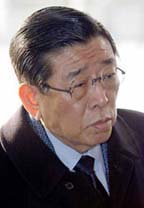
Deputy Director of the Republic of Korea Presidential Protective Forces, Kim, Un Yong was elected the president of the Korea Taekwondo Association on 23 January 1971. Though he initially declined the position due to the continued conflicts within the organization, he was asked by the Korean government to accept and to cleanse the association. Which he has had great success in accomplishing.
Believing that Taekwondo was a Korean martial art and its governing body should be based in Korea, Dr. Kim dissolved the relationship between the Korea Taekwondo Association and the International Taekwondo Federation.
In 1973 the World Taekwondo Federation was formed and Dr. Kim was elected its president. This organization has lead the martial art of Taekwondo into its status as an Olympic Sport.
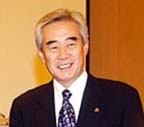
In 2004 Dr. Kim stepped down as WTF President due to an ongoing corruption scandal. After a trail held in South Korea he was also sentenced to a two and a half year prison term. In 2005 Chung Won Choue was elected the president of the WTF.
Taekwondo in the United States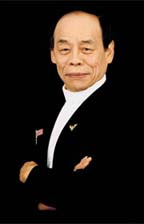
Taekwondo was introduced to the United States by Jhoon Rhee — who is known as the Father of American Taekwondo. He made his first journey to the States in 1956 in a Korean officer training program. After returning to Korea to finish his military service, he came back to the States in 1957 as an engineering student. In 1959, while attending the University of Texas in Austin, he needed income. Thus, he became the first instructor to teach the art of Taekwondo to American students in the United States. Today, in his sixties, he is still a very active instructor and proponent of Taekwondo.
Source: Interviews with First Generation South Korean and Japanese Practitioners of the Modern Martial Arts; 1972 to present.
Copyright © 1979, 1982, 1987, 1993, 1994, 1996, 1997, 1998, 2001, 2004
All Rights Reserved
No part of this may be reproduced in any manner without the expressed permission of Scott Shaw or his representatives.